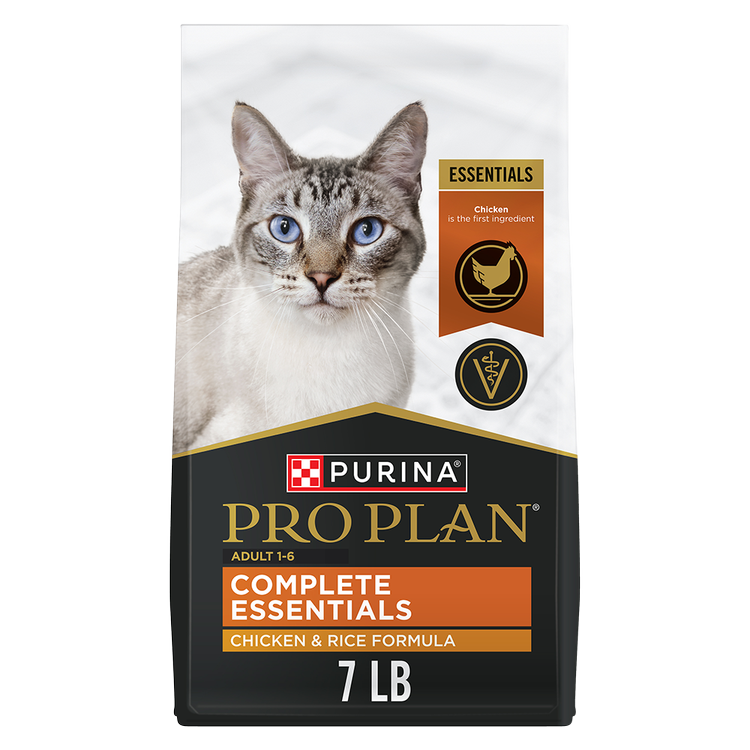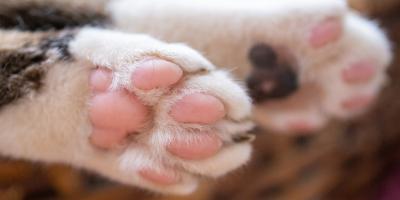Can cats get pimples or acne just like humans? Yes, unfortunately, cat acne exists and affects felines quite often. Although it’s still unclear why it develops, there are a few things cat owners should know to help their cats get better and avoid outbreaks in the future.
What Causes Cat Acne?
Cat acne, a type of follicular keratinization and glandular hyperplasia, forms when the hair follicles are blocked because of excess production of keratin, which is a protein found in the cat’s skin. In cats, acne in the form of blackheads can cause areas of pus, reddening, and crusting around the chin area and lip margins, which is why it’s commonly referred to as cat chin acne.
Why the keratin builds up and blocks hair follicles is still unknown, but cat blackheads can occur due to a few things people, and their cats, do:
- People use plastic bowls to feed cats, or do not clean their cat’s food and water bowls frequently
- Cats have poor grooming habits
These two things can be easily remedied. First, switch to stainless steel, glass, or sealed ceramic bowls. While bowls made of plastic or unsealed ceramic can be convenient, they are porous and can collect bacteria, which can lead to acne.
Older cats often neglect their grooming habits. And some cats don’t clean their mouth and chin area very well. As the pet owner, you can help your cat groom his or her mouth and chin with a warm washcloth or vet-approved cat cleansing wipes. Just remember, while you’re cleaning, don’t try to pick the black scabs on your cat’s skin or try to pop the feline acne, as that can cause a more serious infection.
In addition to food and water bowls and poor grooming, there are other underlying conditions that contribute to feline acne breakouts:
- Compromised immune system
- Stress
- Food allergies
- Hormonal imbalances
- Hyperactive sebaceous glands
- Allergic reactions to medications, rubber toys, and dishes
All breeds and types of cats can get acne, although it appears to be more common in felines with skin folds and long hair. Contact a vet if your cat’s acne persists after switching to stainless steel or glass bowls and helping groom your cat. There may be another issue your vet will need to address.
Symptoms of Cat Acne
The usual sign of kitty acne is tiny black scabs on your cat’s chin. These cat acne blackheads can also appear on your cat’s lips and around the mouth.
Feline acne also shows as small bumps accompanied by whiteheads, like pimples on humans. But usually on a cat’s skin, it looks more like dirt than pimples. That’s why many owners don’t even notice the skin condition. Redness, hair loss and bleeding can occur in severe cases.
Not sure if it’s cat chin mites or cat acne? Either way, if you see scabs under your cat’s chin, check with a vet to identify the cause.
There are times when skin irritation may be caused by food allergies. Your vet will be able to tell whether it’s acne, a sensitivity, or an allergic reaction. Cats with skin issues may benefit from food formulated for sensitive skin and stomachs.
Diagnosis of Acne in Cats
When diagnosing cat acne, your vet may take blood samples, skin scrapings to check for abnormal cells or secondary infection, and a urine sample. Your vet will check for any gum or tooth infections. For unusual looking skin lesions, your vet may recommend a biopsy.
If the outbreak is not acne, your vet may check for other conditions.
Cat Acne Treatment
Sometimes cat acne will disappear just as suddenly as it appeared. But generally, some sort of treatment is recommended to avoid recurring breakouts or more serious infections. Consult your vet for any treatments. Don’t use human acne medicines on your cat as they can be too harsh for a cat’s delicate skin.
Common Solutions to Cat Acne Include
Cleaning the Area
You can clean the area of acne with chlorhexidine antibacterial washes or wipes a couple of times per day until the breakout begins to clear. Your vet may recommend peroxide or other medicated wipes that are made specifically for cats. Don’t use the human wipes, as they will be too strong.
Warm Compresses
Apply a warm compress of lukewarm water and cotton balls twice a day and press gently. Don’t rub because that can cause irritation.
Medicated Shampoos
Mild feline acne cases can also be treated using anti-seborrheic shampoo. Be sure to only use antibacterial or antifungal shampoos that have been recommended by your vet. Check with your vet before using any human treatment for acne.
Ointments
If approved by your vet, antimicrobial gels may be applied a few times per day.
Systemic Antibiotics
For severe cases where an infection has developed, the vet might recommend a course of antibiotics.
Topical Antibiotics
Your vet may also prescribe topical antibiotics that you will apply directly to the affected area.
Steroid Injections
In severe cases, steroids can be prescribed by the vet to help fight inflammation.
How to Prevent Cat Acne
To prevent cat acne, switch to stainless steel, glass, or sealed ceramic bowls or dishes for food and water. Wash used dishes in hot water and offer fresh water every day.
Help your cat groom the mouth and chin area on a regular basis to remove food particles.
Omega-3 fatty acids can help promote skin health. Choose a food rich in omega-3 and other immune-supporting ingredients.
Cat acne will improve significantly or even go away with better hygiene. But we recommend you pay close attention to your cat’s condition. See your vet if symptoms reappear or you struggle to control the acne on your own.
Want more cat health tips? Get advice from our experts with our other cat health articles.
Cat Acne FAQs
Why are there black scabs on my cat’s chin?
Cat acne often shows up as black patches that look like dirt on your cat’s chin. These small black spots are blackheads and are like the ones that people get. Don’t try to pick the black scabs on your cat’s skin as that can cause a more serious infection.
Is cat acne painful?
If the acne swells, scabs, and gets infected, feline acne can become painful for cats. If that’s the case, contact your vet as soon as possible to get the right treatment for your cat.
Is cat acne contagious?
Unlike parasitic infestations, cat acne is not contagious to other cats. It is related to the overproduction of keratin, and that keratin becomes trapped. Your cat with acne can still play with your other cats.
Can I get acne from my cat?
No, humans cannot get acne from cats. To avoid infecting their chin acne further, we suggest that you avoid rubbing against your cat when they have it. It’s also important to not pick their acne and scabs.
Will cat chin acne appear again?
With some cats, feline acne can turn into a recurring condition. To avoid relapses or extend the period between breakouts, maintain a regular cleaning and grooming schedule. If the acne returns on a regular basis, talk to your vet about an effective treatment plan for your cat.
Related articles

Earn myPurina Rewards with Every Purchase
Use your points for treats, toys, and gift cards with myPurina app.








